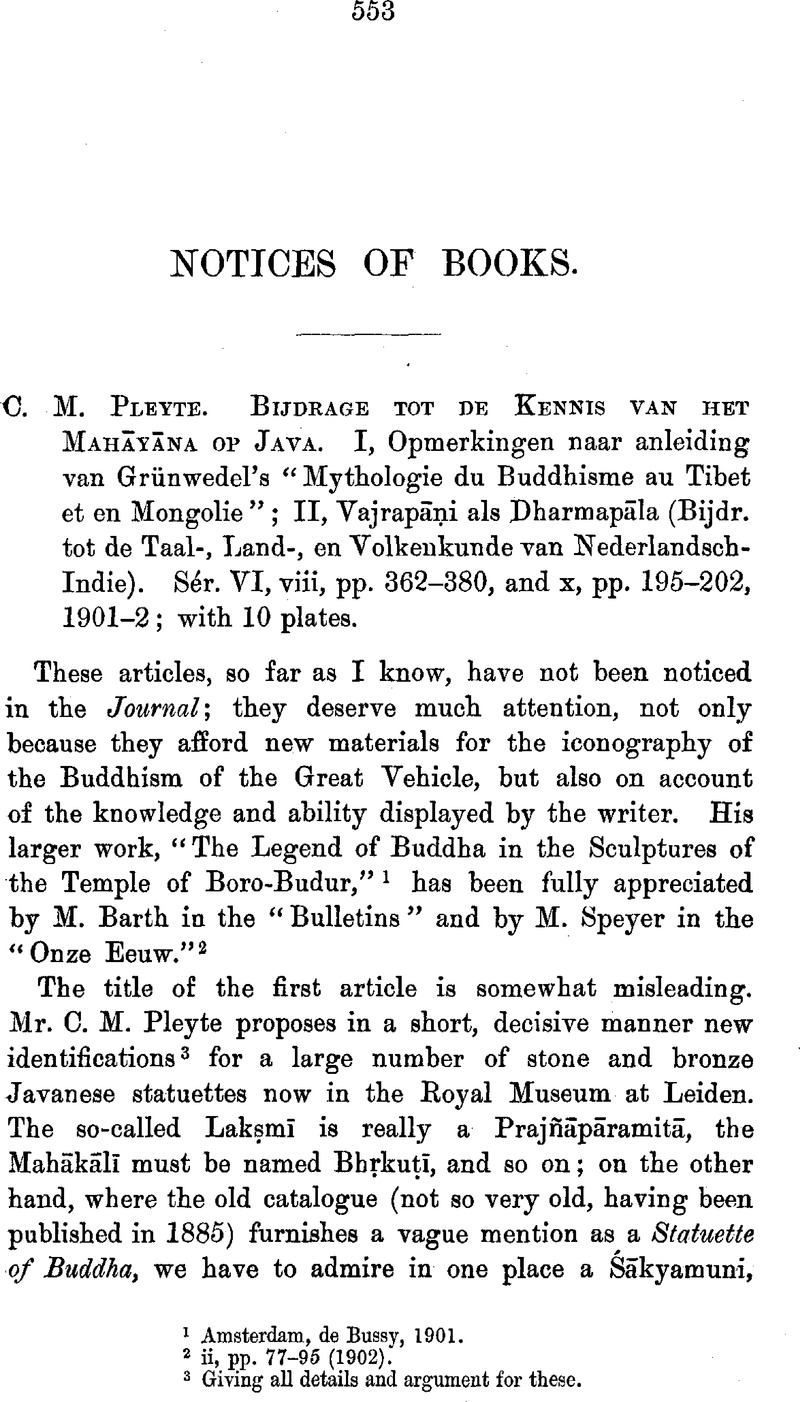No CrossRef data available.
Published online by Cambridge University Press: 15 March 2011

page 553 note 1 Amsterdam, de Bussy, 1901.
page 553 note 2 ii, pp. 77–95 (1902).
page 553 note 3 Giving all details and argument for these.
page 554 note 1 I now hear that M. A. Foucher has found in this work the starting-point of new iconographical inquiries.
page 555 note 1 But, on the contrary, the Nāmasaṃgīti is rather old.
page 555 note 2 Quoted by Waddell from Kern, “ Lotus,” pp. xxii–xxv (Lamaism, 126).
page 556 note 1 Tibetan, yi-dam. Quite an iṣṭadevatā, as everybody chooses his tutelary deity. See Wassilieff, p. 195 (213).
page 556 note 2 So Mr. C. Pleyte. The photograph is not clear enough for verification.
page 556 note 3 For a similar account from Chinese sources, see Wassilieff, p. 187 (204).
page 557 note 1 Śiva is, of course, the fiendish counterpart of Vajrapāṇi; but, for the Yogin, there is no difference to be made between them. See Pa![]() cakrama, vi, 33: yathārudras tathā vajrī … (readings confirmed by the Tib. version).
cakrama, vi, 33: yathārudras tathā vajrī … (readings confirmed by the Tib. version).
page 557 note 2 Bibl. Indica.
page 557 note 3 There is a noteworthy document in the translation of Atīśa's Bodhipathapradīpa, by Candra Dās.* Being, as it is, lost in the luxuriant footnotes, I fear that it might have escaped the attention of the reader. The Ācārya, we are told, at the time of his death, said to his pupil, the celebrated Hbrom-ston, “ O Kalyānamitra, purify your mind by means of the Sūtras. The four classes of Tantras being mixed up together would be dissolved, i.e. discarded as misleading and useless.” The exegesis of Candra Dās is mixed up with the text; but it appears that the Ācārya had objections to the fourth class of Tantras; the three first, being necessary to the pūjā and to the ordinary yoga by regulation of the breath, are assured of a relative orthodoxy.
* See Journal of the Buddhist Text Society, i, p. 44.